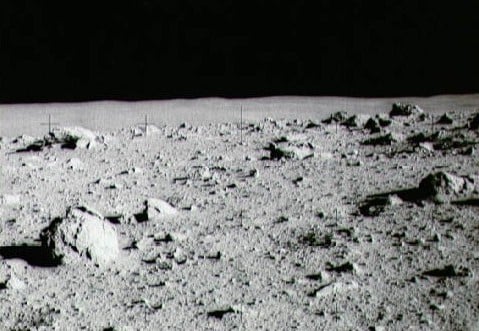Someone has finally figured out something useful for all the dust on the moon's surface: mix it with some epoxy and a pinch of carbon to create giant telescope mirrors. "We could make huge telescopes on the moon relatively easily, and avoid the large expense of transporting a large mirror from Earth," said Peter Chen at a press conference today at the American Astronomical Society meeting. "Since most of the materials are already there in the form of dust, you don't have to bring very much stuff with you, and that saves a ton of money."
Chen and is team had been working with carbon-fiber composite materials to produce high-quality telescope mirrors. But then they decided to try an experiment. They substituted tiny carbon nanotubes for the carbon-fiber composites, and mixed in epoxies with crushed rock that has the same composition and grain size as lunar dust, they discovered to their surprise that they had created a very strong material with the consistency of concrete. This material can be used instead of glass to make mirrors.
Then they spun their concoction at room temperature to create a 12-inch-wide telescope mirror form, which they then coated with aluminum to create a highly reflective surface.
"Our method could be scaled-up on the moon, using the ubiquitous lunar dust, to create giant telescope mirrors up to 50 meters in diameter," said collaborator Douglas Rabin. Currently the world's largest optical telescope is the 10.4-meter Gran Telescopio Canarias in the Canary Islands, so this would be quite a step up.
Like
liquid mirror telescopes,
these large telescopes on the moon have definite advantages. With a stable platform, and no atmosphere to absorb or blur starlight, the monster scope could record the spectra of extra solar terrestrial planets and detect atmospheric biomarkers such as ozone and methane. Two or more such telescopes spanning the surface of the Moon can work together to take direct images of Earth-like planets around nearby stars and look for brightness variations that come from oceans and continents.
"Constructing giant telescopes provides a strong rationale for doing astronomy from the moon," says Chen. "We could also use this on-site composite material to build habitats for the astronauts, and mirrors to collect sunlight for solar-power farms."
 Universe Today
Universe Today
